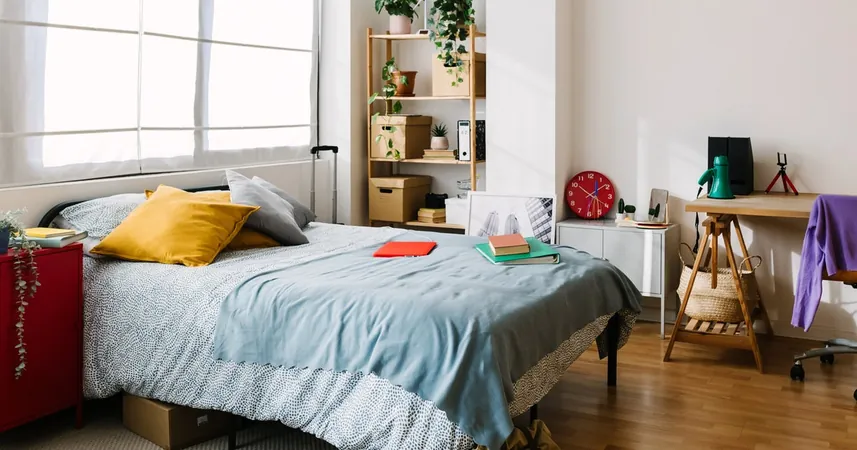
The Hidden Germs Lurking in Your Bedroom: What You Need to Know
2025-05-06
Author: Ying
Think Your Bedroom is a Safe Haven? Think Again!
While most people are vigilant about germs in public places like grocery stores and airports, many overlook the alarming microbe hotspots in the comfort of their own bedrooms. Carol McLay, an expert in infection control, reveals that your cozy sanctuary may house a startling amount of bacteria, fungi, and allergens.
1. Pillows: The Unseen Breeding Ground
Your pillow might seem innocuous, but it's a veritable breeding ground for harmful bacteria and dust mites. Professor Kelly Reynolds from the University of Arizona explains that pillows collect dust mites, dead skin, and even fungi. A two-year-old pillow can weigh up to 10% more due to these contaminants!
2. Sheets: A Microbial Menagerie
Bed sheets do more than just keep you warm; they also soak up body sweat, skin oils, and bacteria. If you eat in bed or cuddle with pets, this contamination skyrockets. Microbiologist Jason Tetro warns that sheets can act like sponges, creating the perfect environment for germs to grow.
3. Mattresses: The Overlooked Contaminant Reservoir
When was the last time you cleaned your mattress? Probably never! Overlooked and rarely serviced, mattresses accumulate everything from dust mites to dead skin cells, exacerbating allergies and asthma. Reynolds highlights how tough it is to keep these larger surfaces clean compared to linens.
4. Light Switches and Door Handles: The Touchpoints We Neglect
Think about how often you touch light switches and doorknobs—yet these high-contact surfaces often get the least attention when it comes to cleaning. McLay emphasizes that these areas should be regularly dusted and disinfected.
5. Floors: The Germy Foundation
Surprisingly, your bedroom floor is one of the most contaminated areas, with bacteria building up over time as your body sheds microbes. The risk escalates if you share the space with pets.
6. TV Remotes: The Electronics of Illness
Those innocent-looking TV remotes? They’re germ hotspots! Constantly handled and rarely disinfected, they gather germs, especially in shared living spaces. Your cellphone isn’t much better if it travels with you to the bathroom.
7. Carpets and Upholstered Furniture: Trapping the Unseen
Every time you walk in, your carpets and curtains collect dust and bacteria. Regular vacuuming is essential, but it’s often neglected. Upholstered items are difficult to clean but contribute significantly to germ concentration.
Action Steps to Reduce Bedroom Germs
While many microbes are harmless, a thorough cleaning routine can keep potential irritants at bay. Clean your bedroom at least once a month, wash bed linens in hot water weekly, and switch pillowcases regularly. Don't forget to vacuum carpets and upholstery, and consider using hypoallergenic covers for added defense.
When Health Matters Most
Routine cleaning is crucial, especially if anyone in your household is sick. Increasing your cleaning frequency can dramatically curb the spread of infections, ensuring that your bedroom remains a safe and restful space.




 Brasil (PT)
Brasil (PT)
 Canada (EN)
Canada (EN)
 Chile (ES)
Chile (ES)
 Česko (CS)
Česko (CS)
 대한민국 (KO)
대한민국 (KO)
 España (ES)
España (ES)
 France (FR)
France (FR)
 Hong Kong (EN)
Hong Kong (EN)
 Italia (IT)
Italia (IT)
 日本 (JA)
日本 (JA)
 Magyarország (HU)
Magyarország (HU)
 Norge (NO)
Norge (NO)
 Polska (PL)
Polska (PL)
 Schweiz (DE)
Schweiz (DE)
 Singapore (EN)
Singapore (EN)
 Sverige (SV)
Sverige (SV)
 Suomi (FI)
Suomi (FI)
 Türkiye (TR)
Türkiye (TR)
 الإمارات العربية المتحدة (AR)
الإمارات العربية المتحدة (AR)